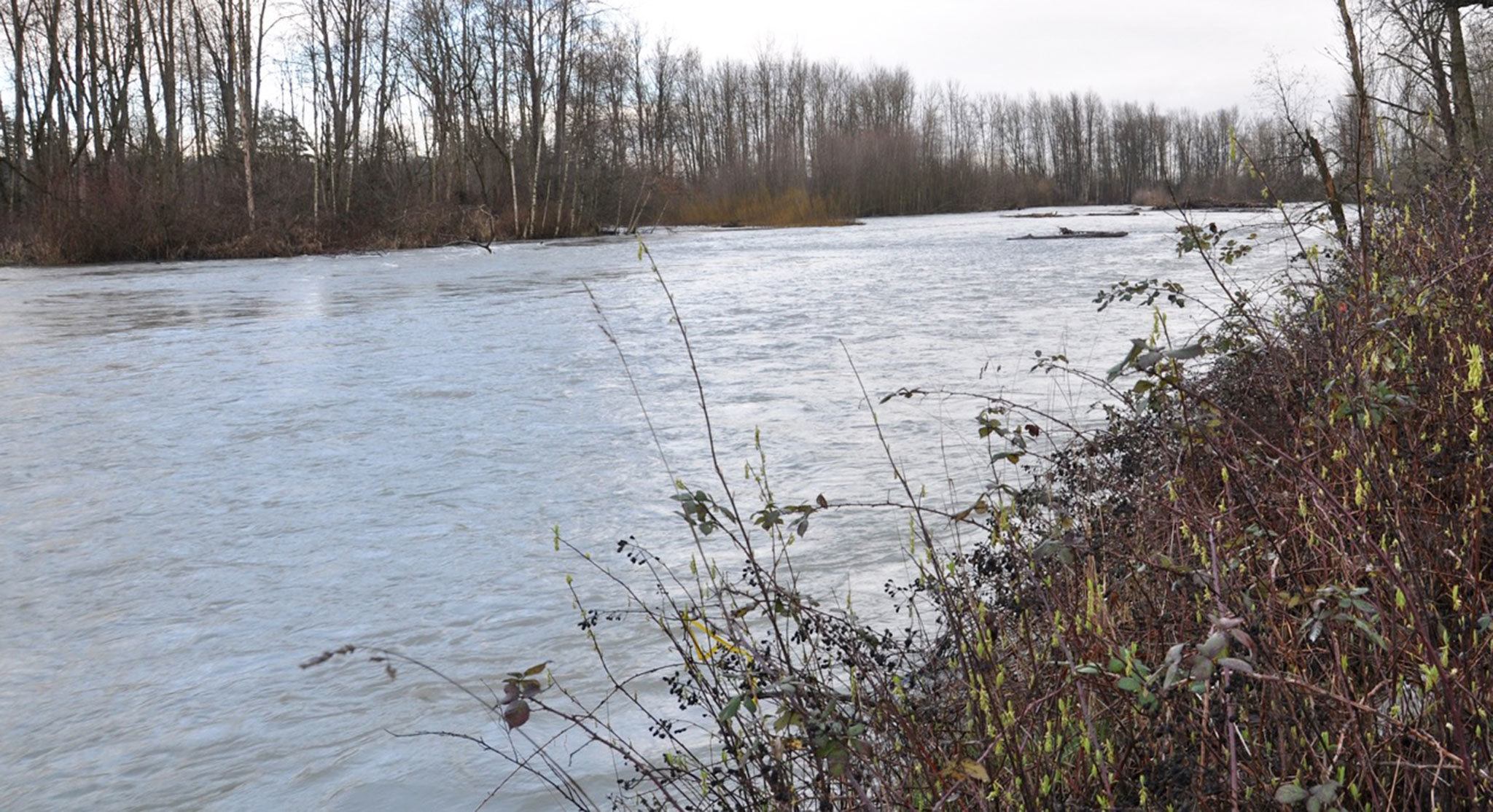The National Weather Service has forecast a wetter, colder winter than the Pacific Northwest typically gets, prognosticators going so far as to compare what’s coming to the “Snowmageddon” that hit the region in January 2012.
Local emergency folks aren’t fretting the flakes so much, what concerns them is the potential for several rainstorms one right after another to swell the White River and cause it to top its banks.
And should that occur, there would be consequences for the valley floor cities of Sumner, Pacific and Algona, and to a lesser extent parts of southeast Auburn, Auburn Emergency Manager Jerry Thorson told City officials Monday.
As for Auburn, flooding could put the area of Ellingson Road from C to A Streets Southeast under as much as a foot of water, forcing street closures and, among other issues, preventing anyone from getting into or out of the White River Mobile Estates at 4248 A St. SE.
Whereas the White River could once handle flows of 6,000 to 8,000 cubic feet per second, infill that has come off the Emmons Glacier on Mount Rainier and silted up the river has turned even flows of 5,000 cubic feet per second into reasons to worry.
“It’s not that anything has dramatically changed this year, it’s just the fact that, as that bottom continues to come up and we’re expecting heavy rains, we could get into trouble,” Thorson said.
To understand his concern, consider the Mud Mountain Dam, which the Army Corps of Engineers built in 1948, not to generate power or provide water for irrigation but solely to keep the White and Puyallup rivers from flooding.
In the past the Corps of Engineers could release much more water than it can today to protect the earthen Mud Mountain Dam’s reservoir, which is essentially a river meandering through a river valley, with water flowing through the gates at the bottom of the dam. As flows increase to 6,000 to 8,000 cubic feet per second, today, however, the Corps fills up the reservoir, allowing only a specified amount of water to flow through.
“They have informed us this year that they will be allowing 6,000 cubic feet per second to flow through the dam as a matter of practice,” Thorson said. “That is likely to cause flooding on the valley floor, primarily in Sumner and Pacific, but also some into Auburn. And as the flows increase, we are going to see additional flooding.”
The challenge, Thorson said, is that when the Corps releases water at the rate of 6,000 cubic feet per second at the dam, depending on weather conditions and where the rain falls, Auburn is likely to see flows of 8,000 cubic feet per second at the R Street gauge on the White River.
“What that means is that the streams that flow into the river below the dam add to the water that we see,” Thorson said. “When you compound that with the fact that they aren’t really sure how much infill there has been (in the river), it’s still a little soft as to when we’ll see the flooding.”
And what if the Corps permits flows of 8,000 to 10,000 cubic feet per second?
“If the Corps is really concerned about that dam and the capacity for the following storms coming on, they could release 10,000 to 12,000 cubic feet per second. This is our concern – C Street and the Ellingson Road intersection could be more than a foot under water, which would likely force that street to close,” Thorson said. “A Street and businesses along it would be well over a foot deep, and at this point, we’ve got more than a foot over the entrance to the White River Mobile Home Park. So while the park is dry, there is no way in or out, and we’ve a got a population there that we need to deal with.”
As part of a direct outreach, the City of Auburn has prepared a brochure in English and Spanish to inform residents of the White River Estates and others who may be in the direct line of flooding about how to sign up for flood alerts and about the City’s plans to deal with such scenarios.
Emergency personnel also expect to conduct a table top exercise in the coming weeks so City staff know what to do.
“It really helps for each of the city departments to solidify their plans, so that when this does occur, if it occurs, we’ve got the steps in mind, and we know how to deal with it. We’ve been working with the cities of Pacific, Sumner and Algona because, when this happens, it will affect all of us,” Thorson said.


